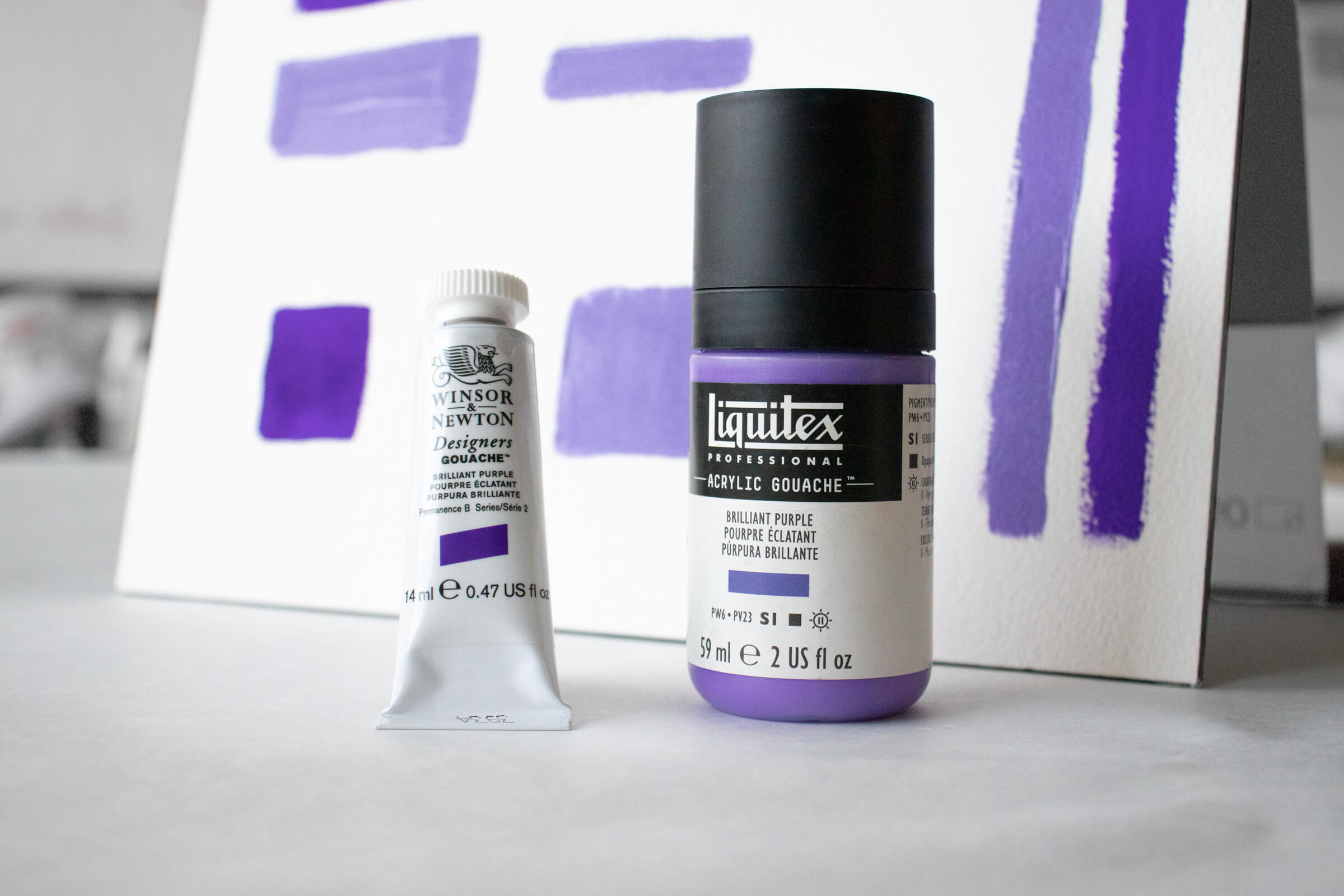...and what is gouache anyway?
Gouache is used to refer to two major types of paint, Acrylic Gouache and Traditional Gouache. While these two paints share similarities, they are two distinct art mediums, each with their strengths and avid fans.
In this article, we'll give you a primer on the two types of gouache: what are their differences, what they are composed of, what makes them popular, and more.
Table of Contents
What is Acrylic Gouache?

Acrylic Gouache is a subset of acrylic paint. Acrylic paints are composed primarily of acrylic resin, pigments, and water. The product is flexible, vibrant, and versatile, especially when incorporating the wide range of acrylic mediums available.
Opaque & Matte
Acrylic Gouache differs from other acrylics as it is specially formulated to be more opaque, with a matte finish when dry. Viscosity-wise, these paints are like a creamy fluid, moving much easier than a heavy body acrylic paint.
Acrylic Mediums
While you can in theory use a little water to dilute your these acrylics, adding too much water will weaken the paint integrity. Instead, to extend your paint or achieve different effects, it's better practice to use acrylic mediums such as gel mediums, flexible modelling pastes, or pouring mediums.


Why choose Acrylic Gouache?
In the two swatch photos above, we sought to demonstrate some of the reasons you might choose an acrylic gouache. On the left, a photo of the freshly painted gouache, and on the right, dried paint with a wet brush pulled over it. Plus, the creamy texture and opacity combine to make a high-coverage paint – offering you vibrant colours without needing multiple thick layers.
Acrylic gouache is a flat paint that results in minimal reflections and brush texture. This characteristic is popular amongst artists who prefer glare-less results for photography or scanning, including illustrators.
The dried paint is flexible and water-resistant. Regular application of the paint will be crack-free. As demonstrated in the above swatches, painting overtop will not result in any movement from dried layers below. So, feel free to layer away to your heart's content!

Drying on your palette
Acrylic Gouache is an acrylic paint, so once the paint dries on your palette, it will no longer be useable as a paint. You will not be able to add water to re-activate the acrylic gouache.
To keep your paints useable for longer periods of time, you will need a way to keep your acrylic gouache moist. You could use a palette like a Sta-Wet Palette, with its unique sponge designed to keep your acrylic gouache wet.
Using a moist paper towel in your palette or a palette wetting spray can also help keep your paints activated.
What is Traditional Gouache?

Traditional Gouache, the older of the two mediums, is a water-media much like watercolour paints. Typically, they are a made from a combination of pigment and a water-soluble binder such as gum arabic.
Opaque & Matte
Traditional Gouache's main difference from watercolour paints is the opacity and matte finish. However, the water-soluble nature means that the paint can be easily diluted to become more transparent if desired.


Why choose Traditional Gouache?
Traditional Gouache is a fantastic choice for watercolour artists seeking a more opaque option, OR for acrylic painters, a step into the world of water-media.
Traditional Gouache shares the same easy cleanup process as watercolour paints, and the same tools can be used. Many traditional gouache artists prefer the use of the smoother, hot press watercolour paper to fully achieve the flat effect.
Traditional Gouache can offer more forgiving layering, when compared to watercolours. Your layers won't show through very much, so gouache can be great for sharp lines and bold, clear expression.
The opacity and flat effect that traditional gouache offers makes this medium popular amongst illustrators whose work will be digitally scanned or photographed, as well as watercolour artists.

Reactivate with water!
Much like standard watercolour paints, traditional gouache can be reactivated with a wet brush or a gentle mist. Just ensure that you mind how much water you're using – you wouldn't want to dilute your paint more than you intend. Many artists prefer to squeeze fresh paint from the tubes to ensure they're getting the opacity they expect.
Acrylic Gouache & Traditional Gouache Side-by-Side
Side-by-Side
In the images above, we painted swatches of Winsor & Newton Traditional Gouache and Liquitex Acrylic Gouache, both in the colour "Brilliant Purple." It should be noted that while the name of the colour is the same, the pigments contained are slightly different, leading to the difference in colour.
There are a few differences you may notice when comparing the two. The acrylic gouache shows brush marks more than the traditional gouache.
Also, the acrylic gouache is more opaque, blocking more of the pen ink than the traditional gouache. The opacity of the traditional gouache could be increased by using more concentrated paint, but the thicker acrylic paint is going to hide more of the surface regardless.
Gouache Conclusions
The term gouache encompasses two paints that have similarities and differences. Acrylic Gouache will feel more familiar to those used to working with acrylic paints, and traditional gouache more familiar to those used to watercolour paints. They make a good bridge for artists interested in making a foray from acrylic to water-media, and vice versa.
The two gouaches are both flat, opaque paints in comparison to acrylic and watercolour paints, making them popular for digital scanning and reproduction. Illustrators creating work for comics, animation, posters and more will especially appreciate these properties. Gouache can also be useful in tandem with regular acrylics / watercolours in order to add flat and opaque details.



